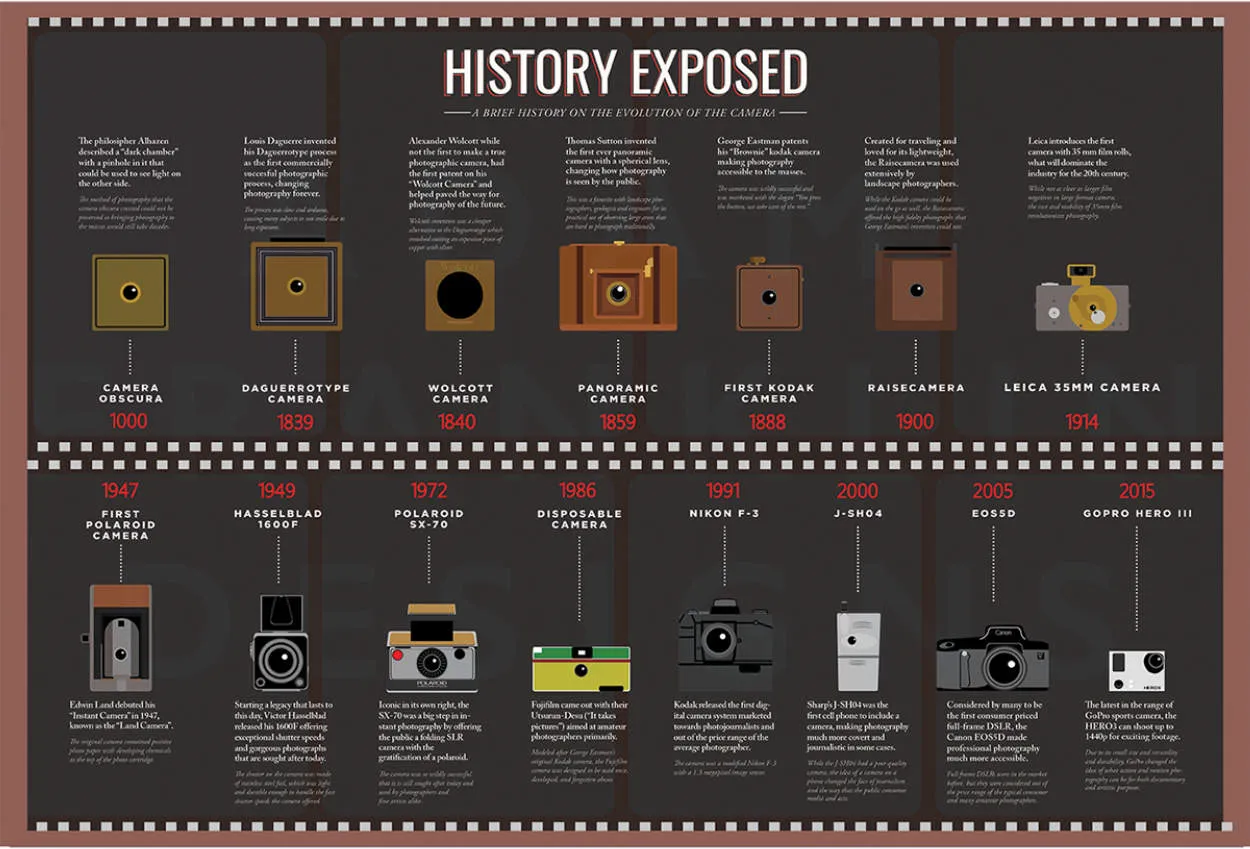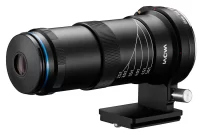The Evolution of European Cameras: A Historical Perspective explores the fascinating journey of camera development in Europe. From the humble beginnings of the camera obscura to the cutting-edge digital cameras of today, this article delves into the milestones, innovations, and iconic European brands that have shaped the photography industry throughout history.
Pioneering European Camera Brands
Europe has been a hub for innovation in the field of photography, with several iconic camera brands paving the way for modern imaging technology. From Germany to Sweden, here are some of the pioneering European camera brands that have left a lasting impact:
1. Leica: Founded in 1914, Leica is known for introducing the first 35mm camera, which revolutionized photography by making cameras more portable and accessible.
2. Hasselblad: Established in 1941, Hasselblad cameras became synonymous with high-quality medium format photography. Their cameras were used by NASA during the Apollo missions to capture breathtaking images of the moon.
3. Zeiss: Zeiss has been a major player in the optics industry since 1846. Their lenses are renowned for their exceptional sharpness and clarity, and they have collaborated with various camera manufacturers to enhance image quality.
4. Rollei: Rollei gained popularity in the mid-20th century for introducing compact and versatile cameras. They are known for their twin lens reflex (TLR) cameras, which became a favorite among professional photographers.
5. Polaroid: Though originally an American company, Polaroid has become synonymous with instant photography. The company’s unique instant film cameras gained immense popularity and sparked a trend during the 20th century.
These brands are just a few examples of the European camera manufacturers that have played a pivotal role in shaping the history of photography. Their innovative cameras have influenced the art form, and their legacy continues to inspire photographers today.
Technological Milestones in Camera Development
The Evolution of European Cameras: A Historical Perspective
Introduction
In the past century, European camera manufacturers have played a significant role in shaping the development and innovation of cameras. From the early days of photography to the present digital era, numerous technological milestones have propelled European cameras to the forefront of the industry.
1. Invention of the Pinhole Camera
One of the earliest milestones in camera development was the invention of the pinhole camera, also known as the camera obscura. It is believed to have originated in Europe during the Renaissance. This simple camera operated on the principle of light passing through a small hole onto a light-sensitive surface, forming an inverted image.
2. Introduction of Folding Cameras
The late 19th century saw the introduction of folding cameras by European manufacturers. These portable cameras featured bellows that allowed for easy expansion and retraction, making them ideal for amateur photographers and travel enthusiasts.
3. Leica and the Birth of 35mm Photography
In 1925, the German company Leica revolutionized photography with the introduction of the Leica I, the world’s first 35mm compact camera. This milestone marked the beginning of the compact camera era and significantly influenced the development of modern-day photography.
4. Single Lens Reflex (SLR) Cameras
During the mid-20th century, European camera manufacturers, including Nikon and Canon, played a crucial role in advancing SLR camera technology. SLR cameras allowed photographers to view the scene through the same lens used to capture the image, enhancing precision and control.
5. Digital Cameras and Sensor Technology
In the late 20th century, European companies such as Kodak, Nikon, and Canon were at the forefront of the digital camera revolution. The development of digital cameras and sensor technology led to a shift from film to digital photography, transforming the way images are captured, stored, and shared.
6. Mirrorless Cameras and Compact System Cameras
In recent years, European companies such as Sony, Fujifilm, and Olympus have made significant contributions to camera development with the introduction of mirrorless cameras and compact system cameras. These cameras combine the portability of compact cameras with the versatility and image quality of traditional DSLRs.
Conclusion
The evolution of European cameras has been marked by numerous technological milestones that have shaped the photography industry. From the invention of the pinhole camera to the rise of digital and mirrorless cameras, European manufacturers have played a key role in advancing camera technology and enabling photographers to capture the world in innovative ways.
Influence on Photography Industry
Photography has undergone significant changes throughout history, and the evolution of European cameras has played a crucial role in shaping the industry. From the early camera obscura to modern digital cameras, Europe has been at the forefront of pioneering advancements in photography technology.
During the 19th century, European inventors made groundbreaking contributions to camera design. Innovations such as the daguerreotype process by Louis Daguerre in France and the collapsible bellows camera by Thomas Sutton in England revolutionized the way images were captured. These advancements expanded the possibilities of photography and made it more accessible to the masses.
In the early 20th century, German camera manufacturers like Leica and Zeiss revolutionized the industry with the introduction of 35mm film. This compact film format allowed photographers to capture high-quality images with smaller, more portable cameras. The 35mm film format became the standard for photography for many years and laid the foundation for modern film and digital cameras.
European camera companies continued to push technological boundaries, leading to the development of autofocus systems, motor drives, and other innovative features in the latter half of the 20th century. Companies like Nikon and Canon from Japan followed the footsteps of their European counterparts and further advanced camera technology.
The influence of European camera design and technology has had a lasting impact on the photography industry worldwide. European camera manufacturers have set the bar for quality, precision engineering, and innovation, driving competition and pushing the boundaries of what is possible in capturing images.
Today, the photography industry is dominated by digital cameras, with European brands like Canon, Nikon, and Leica continuing to be prominent players in the market. Their legacy of innovation and excellence in craftsmanship continues to shape the way photographers capture and express their vision.
Legacy of European Camera Design
European cameras have left an indelible mark on the photography industry, shaping its evolution and paving the way for modern camera design as we know it today. From the early innovations to the technological advancements of the present, European camera design has been at the forefront of the industry.
The Early Pioneers
In the late 19th century, European inventors laid the foundation for camera design. German engineer Oskar Barnack introduced the compact Leica camera in the 1920s, allowing for exceptional portability and versatility in capturing images. This breakthrough set the stage for the development of smaller, more accessible cameras.
Simultaneously, French inventor Louis Daguerre pioneered the daguerreotype, an early form of photography. His contributions revolutionized the way images were captured and developed, setting the stage for the development of more sophisticated camera technologies.
Advancements in Technology
Throughout the 20th century, European camera manufacturers continued to drive innovation and push the boundaries of technology. Brands such as Nikon, Canon, and Hasselblad emerged, introducing groundbreaking features like autofocus, motor drives, and advanced exposure controls.
The German manufacturer Zeiss made significant contributions to lens design, revolutionizing image quality and precision. Their lenses became the gold standard for many professional photographers, ensuring sharpness and clarity.
Modern European Camera Design
Today, European camera design continues to flourish. Manufacturers like Leica, with their commitment to craftsmanship and attention to detail, offer cameras that blend tradition with cutting-edge technology. These cameras provide photographers with exceptional image quality and unrivaled build quality.
Furthermore, European designers continuously innovate in areas such as mirrorless technology, integrated electronic viewfinders, and improved image stabilization. These advancements allow photographers to push the boundaries of their creativity and capture stunning images with ease.
In conclusion, the legacy of European camera design in the photography industry cannot be understated. From the early pioneers to the advancements of today, European manufacturers have shaped the evolution of cameras, providing photographers with powerful tools to capture and share their vision with the world.
Conclusion
In conclusion, the evolution of European cameras has played a significant role in shaping the photography industry. From the early daguerreotype cameras to the modern digital cameras, European manufacturers have constantly pushed the boundaries of innovation. The advancements in technology have not only improved the quality and capabilities of cameras but have also made them more accessible to the masses. Without a doubt, European cameras have made a lasting impact on the art and science of photography.




